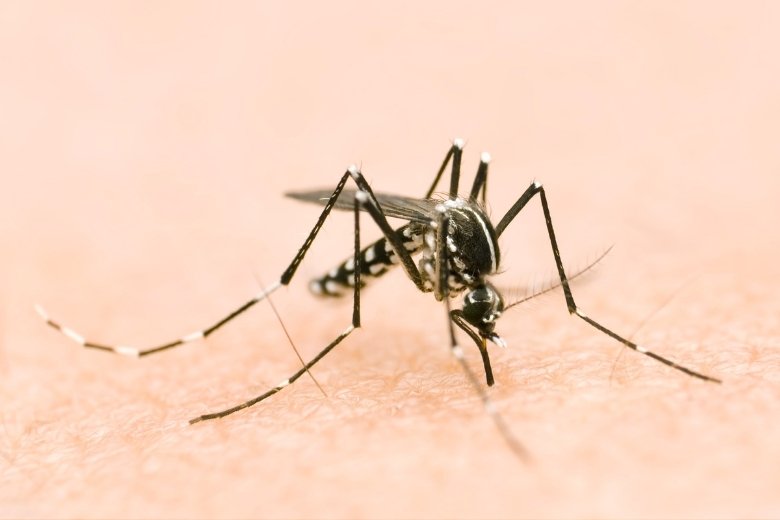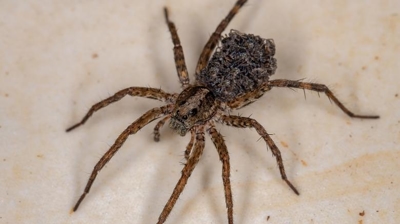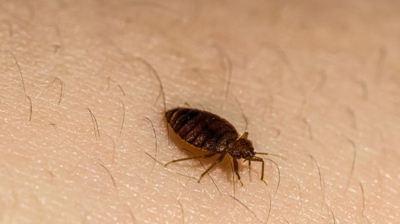
Asian Tiger Mosquitoes

Are Asian Tiger Mosquitoes Harmful?
Asian tiger mosquitoes (Aedes albopictus) are considered harmful for several reasons, primarily due to their role as disease vectors, their aggressive biting behavior, and their adaptability to human environments. Here are the main ways these mosquitoes pose a threat:
Disease Transmission
- Asian tiger mosquitoes are capable of spreading several dangerous viruses, including:
- Dengue Fever – Causes high fever, severe body aches, and in some cases, life-threatening complications.
- Chikungunya Virus – Leads to debilitating joint pain and fever.
- Zika Virus – Can cause birth defects (such as microcephaly) in babies when transmitted to pregnant women.
- West Nile Virus – Can lead to neurological complications, including meningitis and encephalitis.
- Yellow Fever – In regions where the virus is present, they can be a secondary vector.
Aggressive Biting Behavior
Unlike many mosquito species that bite primarily at night, Asian tiger mosquitoes are daytime biters, making them more disruptive to outdoor activities. Their bites are often more painful than other mosquitoes and can cause itchy, inflamed reactions.
Rapid Spread & High Adaptability
- Thrives in urban and suburban areas: They breed in small containers of water commonly found around homes, such as flowerpots, gutters, and discarded tires.
- Difficult to control: Their eggs can survive desiccation (dry conditions) for months, making eradication challenging.
- Expanding range: They have spread globally due to their adaptability to different climates and human travel patterns.
Economic & Environmental Impact
- Increases healthcare costs: Outbreaks of mosquito-borne illnesses require significant medical resources.
- Hurts tourism & outdoor activities: High mosquito populations can deter outdoor recreation and travel.
- Affects ecosystems: Their presence disrupts local ecosystems by outcompeting native mosquito species and becoming a nuisance for wildlife.
Psychological and Quality of Life Issues
Constant mosquito bites can lead to stress, anxiety, and reduced outdoor enjoyment.
Some individuals develop skeeter syndrome, an allergic reaction causing severe swelling, blistering, and discomfort from bites.
Asian tiger mosquitoes are a significant public health concern due to their ability to spread diseases, their aggressive nature, and their rapid adaptability. Effective mosquito control measures, including eliminating breeding sites and using repellents, are essential to mitigating their impact.
Learn more: Asian Tiger Mosquito Bites
Asian Tiger Mosquito Removal
Eliminating Asian tiger mosquitoes (Aedes albopictus) is crucial because these mosquitoes pose significant public health risks, disrupt ecosystems, and can even impact local economies. Here’s why controlling them is so important:
Vector of Serious Diseases
Asian tiger mosquitoes are aggressive daytime biters and are known carriers of multiple viral diseases, including:
- Dengue fever: Can cause high fever, severe joint pain, hemorrhagic symptoms, and occasionally death.
- Chikungunya: Causes intense joint pain, fever, and fatigue that can persist for months.
- Zika virus: Linked to birth defects such as microcephaly when pregnant women are infected.
- Yellow fever: Though less common in temperate areas, the potential exists if introduced.
Even though not all populations of these mosquitoes carry viruses, their rapid spread increases the risk of outbreaks in areas where these diseases were previously rare.
Aggressive Biting Behavior
Unlike many mosquito species that primarily feed at dusk or dawn, Asian tiger mosquitoes bite during the day, making human exposure constant. Their bites are painful, often leaving itchy, irritating welts that can cause secondary infections if scratched excessively.
Rapid Reproduction and Adaptability
- They thrive in small containers of stagnant water—flower pots, gutters, discarded tires—making them exceptionally difficult to control.
- Their eggs can survive cold winters in some regions, allowing populations to rebound quickly each season.
- This adaptability allows them to invade new areas rapidly, outcompeting native mosquito species and altering local ecosystems.
Environmental Impact
While they don’t transmit malaria like Anopheles mosquitoes, they compete with native mosquito species and other insects for breeding sites. Their dominance can disrupt local food chains, affecting birds, bats, and other insectivorous species.
Economic Consequences
- Increased healthcare costs due to mosquito-borne illnesses.
- Reduced outdoor activity and tourism in affected areas.
- Costs for public health programs to control outbreaks and mosquito populations.
Challenges in Control
- Conventional insecticides are less effective because their eggs and larvae hide in numerous small water sources.
- Community cooperation is essential for eliminating breeding sites, making eradication more complex than targeting a single location.
Asian tiger mosquitoes are a high-risk invasive species. Their ability to spread disease, bite aggressively during the day, adapt to diverse environments, and reproduce rapidly makes proactive control not just important but essential for public health, environmental balance, and economic stability.
Learn more: How To Get Rid Of Asian Tiger Mosquitoes
Asian Tiger Mosquito Control
Hiring our professional pest control for Asian tiger mosquitoes (Aedes albopictus) is the most effective and reliable way to eliminate these aggressive, disease-carrying pests from your property. Unlike general mosquitoes, Asian tiger mosquitoes are daytime biters, highly adaptable, and breed in even the smallest amounts of standing water — making them difficult for homeowners or business owners to control on their own.
Our professional mosquito control specialists have the training, tools, and advanced treatments necessary to break their breeding cycle and drastically reduce mosquito populations. Our experts conduct thorough property inspections to locate hidden breeding sites such as clogged gutters, plant saucers, and drain pipes. We use targeted larvicides to stop mosquito development at the source and apply adulticide treatments designed to kill active adults without harming beneficial insects.
In addition, our professionals use integrated pest management (IPM) strategies — combining habitat modification, biological control, and safe chemical applications — to deliver long-lasting results. We also provide ongoing maintenance programs to ensure continued protection throughout the mosquito season.
Attempting DIY control often results in temporary or incomplete relief since over-the-counter sprays only target adult mosquitoes and fail to eliminate larvae. Our professionals not only remove current infestations but also prevent future outbreaks, protecting you, your family, and your customers from nuisance bites and potential health risks such as West Nile virus, Zika virus, and other mosquito-borne diseases.
Our professional mosquito control offers expert precision, safety, and sustained protection that DIY methods simply can’t match.
Asian Tiger Mosquito Exterminators
Hiring our local exterminators rather than a national company for Asian tiger mosquito control has several clear advantages, especially given the biology and behavior of this specific species. Here’s why our local expertise is critical:
- Deep Knowledge of Local Mosquito Ecology: Asian tiger mosquitoes thrive differently depending on regional climate, rainfall patterns, and urban infrastructure. Our local exterminators understand where mosquitoes are likely breeding in the area—storm drains, neglected gutters, small water containers, ornamental ponds, or even local plant nurseries. We know seasonal population trends and can time treatments to be most effective, targeting peak egg-laying periods rather than applying generic year-round sprays. Certain neighborhoods or microclimates might be more prone to infestations; our local pros have firsthand knowledge from past work in the area.
- Customized, Site-Specific Treatment Plans: Asian tiger mosquitoes lay eggs in tiny amounts of standing water that can be easily overlooked. A one-size-fits-all treatment plan from a national company will often miss critical breeding sites. Our local exterminators inspect every nook and cranny of your property and create a plan tailored to your yard, neighborhood, and the behavior of the local mosquito population. Our treatments often combine larvicide, adulticide, and source reduction strategies, timed correctly to break the reproductive cycle—something national companies often does not fine-tune for your property.
- Faster Response and More Flexible Service: Mosquito populations can explode rapidly. Our local exterminators can respond quickly to sudden infestations, sometimes even the same day, while national companies often have rigid schedules and longer wait times. We also provide ongoing services that include adjusting our treatments based on ongoing monitoring, whereas national firms will typically stick to standardized protocols - regardless of results.
- Better Understanding of Local Regulations: Pesticide use and water management regulations vary by city and state. Our local professionals are fully familiar with legal restrictions and environmentally safe practices, ensuring compliance and minimizing liability.
- Community-Specific Advice: Our local exterminators know common neighborhood hotspots—abandoned lots, pools, and drainage issues—that a national company will often overlook. We also advise on prevention strategies tailored to your lifestyle and property such as proper yard maintenance, water container management, and barriers that are relevant to local conditions.
- Accountability and Reputation: Our local exterminators rely heavily on word-of-mouth and our local reputation, making us more invested in delivering visible, lasting results. You have the advantage of direct contact with the technician performing the service, rather than being routed through a national call center and impersonal corporate hierarchy.
- Cost-Effectiveness: Because our treatments are tailored rather than generic, our local exterminators reduce unnecessary chemical use, reducing our cost and environmental impact. We also provide ongoing monitoring programs that prevent re-infestation, which is crucial with a species that can breed in tiny, hidden water sources.
Asian tiger mosquitoes are not “typical” pests—they are highly adaptable, aggressive, and breed in small, scattered locations. Our local exterminators combine hyper-local expertise, customized strategies, fast response, and accountability, which a national company, no matter how reputable, cannot match.
Asian Tiger Mosquito Solutions
Our exterminators use Integrated Pest Management (IPM) to control Asian tiger mosquitoes because these invasive mosquitoes are aggressive daytime biters and vectors of diseases such as dengue, Zika, and chikungunya, posing significant public health risks. IPM begins with a detailed inspection to identify breeding sites, including small containers, tires, clogged gutters, and other areas with standing water, as well as locations of high adult activity. Management strategies focus on habitat modification, such as eliminating standing water, improving drainage, maintaining vegetation, and implementing physical barriers to reduce human-mosquito contact. Biological controls, like introducing larval predators or bacteria that target mosquito larvae, are employed where appropriate. Targeted chemical interventions, including larvicides and adulticides, are applied selectively to minimize environmental impact. Ongoing monitoring allows our exterminators to track mosquito populations, evaluate the effectiveness of control measures, and prevent reinfestation. By combining inspection, habitat modification, biological and selective chemical control, and monitoring, IPM provides a long-term, environmentally responsible, and effective solution for managing Asian tiger mosquito populations.
What Do Asian Tiger Mosquitoes Look Like?
Asian tiger mosquitoes (Aedes albopictus) have a distinctive appearance that makes them relatively easy to identify. Here are some of their physical characteristics:
- Size and Body: They are small, typically about 2–10 mm in length. Slender body shape with narrow, delicate legs.
- Coloration: The body and legs are black with striking white markings. Most distinctive is a single white stripe running down the center of the head and thorax (the “tiger” stripe). Legs are banded with alternating black and white segments.
- Wings: Wings are clear but may have faint dark spots, though these are less obvious than body markings.
- Behavioral Traits (helps in identification): Unlike many mosquitoes, Asian tiger mosquitoes are aggressive daytime biters, often active in early morning and late afternoon. They are strong fliers but usually stay close to breeding sites like containers with standing water.
- Comparison with Common Mosquitoes: Other common mosquitoes (like Culex) are typically brownish with less distinct markings, and mostly bite at night.
The bold black-and-white pattern of the Asian tiger mosquito makes it noticeably different from the duller appearance of native species.
Where Are Asian Tiger Mosquitoes Found?
Asian tiger mosquitoes (Aedes albopictus) are found in a wide range of environments, but you are most likely to encounter them in warm, humid regions with standing water. They are especially common in urban and suburban areas, where they take advantage of small, artificial water containers for breeding.
- Backyards & Gardens – Flowerpots, birdbaths, clogged gutters, pet water bowls, and other water-holding containers.
- Tires & Trash – Old tires, discarded containers, and trash that can collect rainwater.
- Drainage Areas – Puddles, storm drains, and poorly drained areas around buildings.
- Shaded Areas – They prefer cool, shady spots during the heat of the day, such as under decks, porches, and dense vegetation.
- Parks & Playgrounds – Areas with trees, bushes, and water sources like fountains or puddles.
- Cemeteries – Vases and flowerpots that hold stagnant water are prime breeding sites.
- Construction Sites – Unused materials, tarps, and open containers that collect rainwater.
- Public Transport Areas – Bus stops, train stations, and other places where standing water can accumulate.
- Forests & Wooded Areas – Especially near trails, picnic areas, and bodies of water.
- Marshes & Swamps – Though they prefer small, contained water sources, they can still thrive near stagnant water.
- Farms & Agricultural Areas – Livestock water troughs and irrigation ditches can serve as breeding sites.
- Summer & Early Fall – Peak season for their activity in temperate regions.
- After Rainfall – They take advantage of new water collections to lay eggs.
- Dawn & Dusk – While they are aggressive daytime biters, they are most active in the early morning and late afternoon.
If you are in an area with a warm climate, abundant vegetation, and human-made water sources, you are highly likely to encounter Asian tiger mosquitoes. The best way to reduce their presence is by eliminating standing water and using repellents when outdoors.
What Do Asian Tiger Mosquitoes Eat?
Asian tiger mosquitoes (Aedes albopictus) have a diet that varies depending on their life stage and gender.
Larvae (Aquatic Stage)
- Diet: Mosquito larvae are filter feeders, consuming organic matter, algae, bacteria, and microorganisms found in stagnant water.
- Purpose: This diet helps them grow and develop before they become adult mosquitoes.
Adult Asian Tiger Mosquitoes
Males:
- Diet: Male Asian tiger mosquitoes feed exclusively on plant nectar, fruit juices, and other natural sugars.
- Purpose: The sugars provide energy for survival and mating.
Females:
- Diet: Female Asian tiger mosquitoes have a dual diet:
- Plant Nectar & Sugars – For basic energy needs, just like males.
- Blood Meals – Required for egg production. They bite humans, pets, and wild animals to obtain the proteins and iron necessary for developing eggs.
What Do Female Asian Tiger Mosquitoes Bite?
- Humans – They are aggressive human biters, preferring exposed skin.
- Mammals – Dogs, cats, livestock, and wildlife like deer and rodents.
- Birds & Reptiles – Less commonly, they may also bite birds, amphibians, and reptiles if no other hosts are available.
Since only female mosquitoes bite and require blood meals for reproduction, reducing breeding sites and using repellents can help minimize their impact.
Asian Tiger Mosquito Life Cycle
The life cycle of Asian tiger mosquitoes (Aedes albopictus) consists of four stages: egg, larva, pupa, and adult. The entire cycle can be completed in 7 to 14 days, depending on temperature and environmental conditions.
1. Egg Stage
- Female mosquitoes lay eggs just above the waterline in small, stagnant water sources like flowerpots, birdbaths, tires, and containers.
- Eggs can survive for months in dry conditions, waiting for water to submerge them before hatching.
- A single female can lay 100 to 200 eggs at a time.
2. Larva Stage (Hatching & Growth) (4-10 days)
- When submerged in water, eggs hatch into larvae (wrigglers) within 1-2 days.
- Larvae live entirely in water, feeding on microorganisms, algae, and organic matter.
- They go through four molts (instars), growing larger each time.
- They must come to the surface to breathe through a specialized tube (siphon).
3. Pupa Stage (Transformation to Adult) (1-3 days)
- After the larval stage, the mosquito becomes a pupa (tumbler), a non-feeding stage.
- It remains in the water but starts developing into an adult mosquito.
- Within a few days, the adult mosquito emerges from the pupa and rests on the water’s surface before flying away.
4. Adult Stage (Flying & Feeding)
- Once fully developed, adult mosquitoes are ready to feed and reproduce.
- Males feed on plant nectar for energy and mate with females.
- Females feed on nectar but also require a blood meal to lay eggs.
- The female lays eggs after feeding, restarting the cycle.
How Long Do Asian Tiger Mosquitoes Live?
- Males live about 10 days, dying shortly after mating.
- Females live up to a month, laying multiple batches of eggs in their lifetime.
Key Factors Affecting Their Life Cycle
- Temperature & Humidity: Warmer, humid conditions speed up development.
- Water Availability: Eggs need water to hatch; reducing standing water breaks the cycle.
- Predators & Environmental Changes: Natural predators (like fish and dragonflies) can limit their survival.
Because they reproduce so quickly and efficiently, controlling their breeding sites is the most effective way to reduce their population.

Hear From Our Happy Customers
-
"Wonderful Service"
Wonderful service. Jarvis is great. Took care of everything I needed. Thank you!
- Henry P. -
"Exceeds Expectations"
I can’t say enough positive things about this company... The tech that came out, Jarvis went above and beyond my expectations. Thank you guys, I will continue using your services.
- Jake M. -
"Great Communication"
Tech was on time, communication was great, and he accommodated my needs.
- Alonzo W. -
"Professional & Considerate"
I’m pleased with Miche services. Jarvis came today. Professional and considerate. Thank you!
- Judy B. -
"Fantastic & Patient"
Jarvis was fantastic and patient. He answered my questions with an in-depth explanation and addressed all of my areas of concern. Would love for him to be my assigned tech going forward. Well done!
- Yonnette M. -
"Very Knowledgeable"
The tech that arrived was courteous, professional, and very knowledgeable. He was Great.
- Uerial I.



